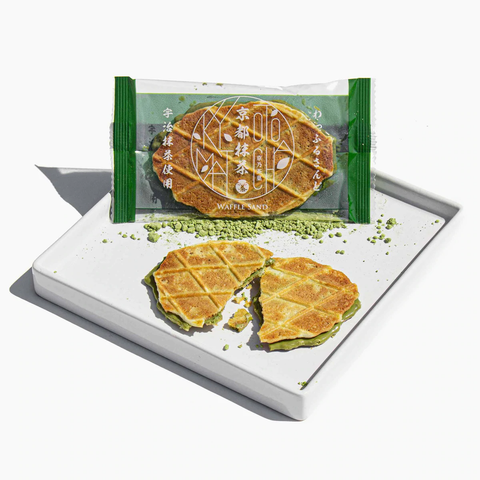A Guide to Japanese Waffles
What makes a Japanese waffle different from a traditional waffle? Keep reading on to learn more about this Japanese phenomenon and how they have become so popular!
What is Taiyaki?
If you’re traveling to Japan soon, there are quite a few kinds of Japanese waffles to look out for, starting with taiyaki. What is taiyaki, you ask? Taiyaki is a Japanese cake sold by street vendors that uses pancake or waffle batter to create a delicious fish-shaped snack. Taiyaki can be filled with many things like custard, cheese, chocolate, or sweet potato, but the most common filling is red bean paste. The Japanese fish waffle, which gets its whimsical design by pouring the batter into a fish-shaped waffle iron, began making waves in 1909 when a store owner named Seijirō Kobe was having trouble selling his products. In an effort to make his store stand out, Seijirō Kobe reimagined the already existing dessert known as imagawayaki, which is also made of batter and red bean paste, to look like a tai (red sea bream fish). Tai are considered to be a symbol for luck in Japan, and given that this taiyaki is still one of the most beloved street snacks available today, it looks like the yummy fish did its job.

Mochi Waffles
Another popular kind of Japanese waffles are mochi waffles. Because they have that grid-like look to them, mochi waffles look more like traditional waffles than taiyaki. Moreover, they have that crunchy, golden-brown exterior that waffles are known for, but they also have a soft, chewy interior that no other waffle can compete with. Japanese mochi waffles are made with a bunch of your classic waffle ingredients like butter, eggs, sugar, and vanilla, but the main ingredient at the center of it all is rice flour. Rice flour is a fine rice that’s made from ground rice and can be used as a thickening agent. The best part is, rice flour is completely gluten free, which means everyone is free to enjoy this unique pastry for themselves.
A reason why mochi waffles are so beloved in Japan is because they can either be made sweet or savory. That’s right – get ready to give “breakfast for dinner” a whole new meaning with mochi waffles! You can enjoy this pillowy breakfast treat with just about anything from a side of bananas foster and whipped cream, to a helping of soy sauce and seaweed flakes. This is because mochi waffles have little to no flavor on their own, and therefore makes them easy to pair. Some popular savory waffle recipes include pork kimchi and mentiako cheese.
What Makes Japanese Waffles Different?
If you consider yourself to be a waffle connoisseur, you’re probably wondering what the difference is between a Japanese waffle and a Belgian waffle. Like mochi waffles, Belgian waffles also feature a crispy caramelized exterior and delightfully fluffy interior. Texture-wise, however, mochi waffles aren't as crispy as they are crunchy. Furthermore, the inside of Japanese waffles are sticky and chewy, much like the scrumptious rice cake treat that the waffles are named after.
Between adorable taiyaki and the doughy delight that is mochi waffles, it’s no wonder why Japanese waffles are so popular in Japan. As for the rest of the world, it looks like we have some serious catching up to do!

If you love japanese waffles and other authentic Japanese snacks, you'll want to try Bokksu Japanese snack box. Bokksu is a subscription service that delivers a curated selection of premium Japanese treats, candies, and teas to your door every month. You'll get to explore the culture and flavors of Japan, from classic waffles to seasonal specialties.
Author Bio











